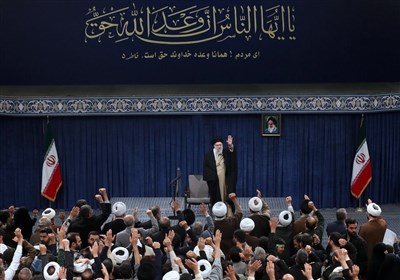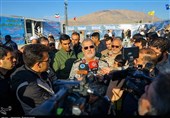Scientists Slow Down Speed of Light Travelling in Free Space
TEHRAN (Tasnim) - Scientists have long known that the speed of light can be slowed slightly as it travels through materials such as water or glass.
However, it has generally been thought impossible for particles of light, known as photons, to be slowed as they travel through free space, unimpeded by interactions with any materials.
In a new paper published in Science Express on Friday, researchers from the University of Glasgow and Heriot-Watt University describe how they have managed to slow photons in free space for the first time. They have demonstrated that applying a mask to an optical beam to give photons a spatial structure can reduce their speed, Science Daily reported.
The team compare a beam of light, containing many photons, to a team of cyclists who share the work by taking it in turns to cycle at the front. Although the group travels along the road as a unit, the speed of individual cyclists can vary as they swap position.
The group formation can make it difficult to define a single velocity for all cyclists, and the same applies to light. A single pulse of light contains many photons, and scientists know that light pulses are characterised by a number of different velocities.
The team's experiment was configured like a time trial race, with two photons released simultaneously across identical distances towards a defined finish line. The researchers found that one photon reached the finish line as predicted, but the structured photon which had been reshaped by the mask arrived later, meaning it was travelling more slowly in free space. Over a distance of one metre, the team measured a slowing of up to 20 wavelengths, many times greater than the measurement precision.
The work demonstrates that, after passing the light beam through a mask, photons move more slowly through space. Crucially, this is very different to the slowing effect of passing light through a medium such as glass or water, where the light is only slowed during the time it is passing through the material -- it returns to the speed of light after it comes out the other side. The effect of passing the light through the mask is to limit the top speed at which the photons can travel.
The work was carried out by a team from the University of Glasgow's Optics Group, led by Professor Miles Padgett, working with theoretical physicists led by Stephen Barnett, and in partnership with Daniele Faccio from Heriot-Watt University.
Daniel Giovannini, one of the lead authors of the paper, said: "The delay we've introduced to the structured beam is small, measured at several micrometres over a propagation distance of one metre, but it is significant. We've measured similar effects in two different types of beams known as Bessel beams and Gaussian beams."
Co-lead author Jacquiline Romero said: "We've achieved this slowing effect with some subtle but widely-known optical principles. This finding shows unambiguously that the propagation of light can be slowed below the commonly accepted figure of 299,792,458 metres per second, even when travelling in air or vacuum.
"Although we measure the effect for a single photon, it applies to bright light beams too. The effect is biggest when the lenses used to create the beam are large and when the distance over which the light is focused is small, meaning the effect only applies at short range."





